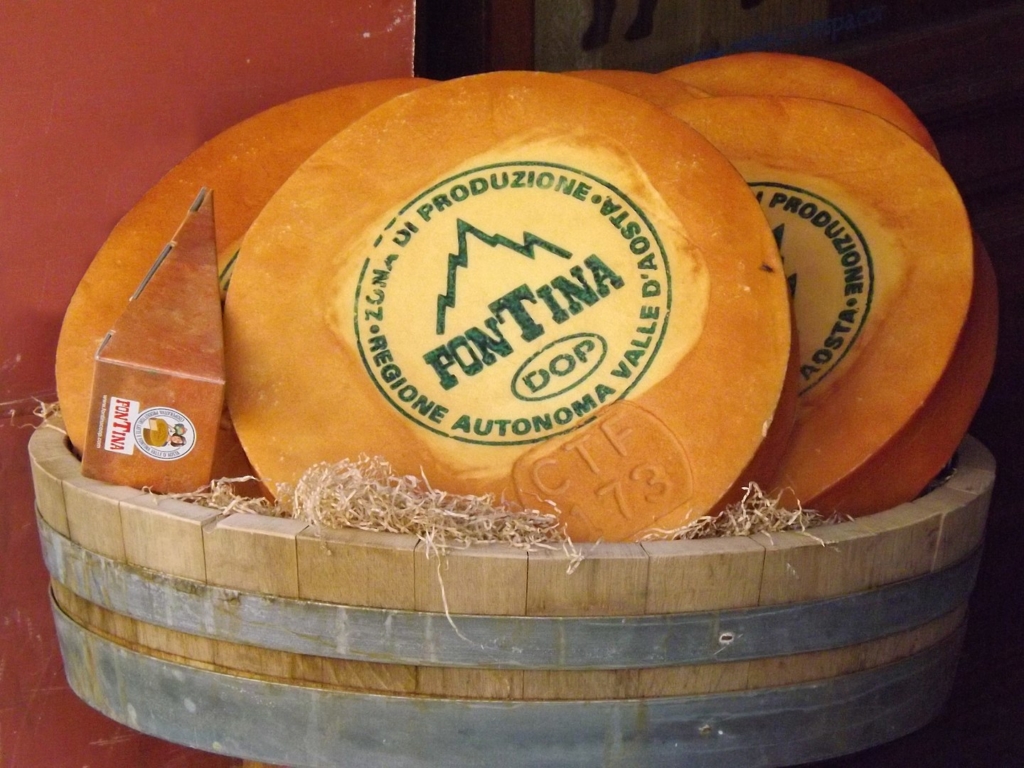This rich and creamy Italian alpine cheese is our new favorite fromage. Fontina is the perfect accompaniment for cheese boards, grilled cheese sandwiches, and everything in between.
What is Fontina?
Fontina has a number of cheesy variations, but the most popular fontina is the Northern Italian cheese produced in the Aosta Valley. Fontina is classified as cow’s milk cheese, supplied from red and white Valdostana dairy cows, raised in the region. The cheese is shaped into round wheels, brined, and then placed in specific caves, caverns, or grottos to age. Everyday the wheels are brushed with brine to deepen the flavor and increase the cheese’s salinity. This process continues for an average of 3 months. Fontina can range from a semi-hard to semi-soft in texture depending on their age. The longer fontina ages, the more firm and sharp in flavor it becomes. Younger fontina is buttery, rich, and creamy, perfect for melting. Older fontina is firmer, funkier, and nuttier than young fontina and is best grated or served alongside other tasty accompaniments on a cheese board.
Types of Fontina

Fontina Val d’Aosta is the Italian variety that must follow very strict production standards to be labeled fontina. The standards are overseen by the Italian cheese DOP regulation board (Denominazione di Origine Protetta) and must be made with raw Valdostana cow’s milk. The finished product has a tan to orange-brown rind, a pale creamy interior, pocked with tiny holes. Firmness depends greatly on the age of the fontina and can vary from semi-soft to firm.
Swedish Fontina is a younger fontina that is soft, mildly pungent, and buttery, perfect for melting. Usually, this style of fontina is dipped in red wax. Swedish-style fontina is not regulated by the DOP and can be made outside of Italy. Most American and Scandinavian fontinas are made in this style.
Fontal is another form of Fontina, usually made in the United States or Europe. Fontal cheese is similar to Fontina Val d’Aosta in that it is semi firm, nutty, and earthy.
Where to find Fontina?
Fontina is easily found at most grocery stores and specialty cheese shops. Store fontina (and any fontina-like variations) tightly wrapped and refrigerated. When stored properly, young fontina should last for approximately 10 days and aged fontina can last for weeks.



